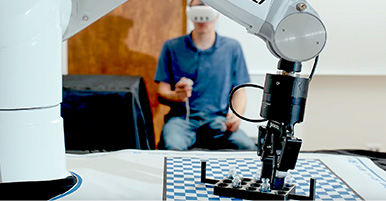Citation
Nagata, Jason M., Gurbinder Singh, Joanne H. Yang, Natalia Smith, Orsolya Kiss, Kyle T. Ganson, Alexander Testa, Dylan B. Jackson, and Fiona C. Baker. “Bedtime screen use behaviors and sleep outcomes: Findings from the Adolescent Brain Cognitive Development (ABCD) Study.” Sleep Health (2023).
Abstract
Objectives
To determine associations between bedtime screen time behaviors and sleep outcomes in a national study of early adolescents.
Methods
We analyzed cross-sectional data from 10,280 early adolescents aged 10-14 (48.8% female) in the Adolescent Brain Cognitive Development Study (Year 2, 2018-2020). Regression analyses examined the association between self-reported bedtime screen use and self- and caregiver-reported sleep measures, including sleep disturbance symptoms, controlling for sex, race/ethnicity, household income, parent education, depression, data collection period (pre- vs. during COVID-19 pandemic), and study site.
Results
Overall, 16% of adolescents had at least some trouble falling or staying asleep in the past 2 weeks and 28% had overall sleep disturbance, based on caregiver reports. Adolescents who had a television or an Internet-connected electronic device in the bedroom had a greater risk of having trouble falling or staying asleep (adjusted risk ratio 1.27, 95% CI 1.12-1.44) and overall sleep disturbance (adjusted risk ratio 1.15, 95% CI 1.06-1.25). Adolescents who left their phone ringer activated overnight had more trouble falling/staying asleep and greater overall sleep disturbance compared to those who turned off their cell phones at bedtime. Streaming movies, playing video games, listening to music, talking/texting on the phone, and using social media or chat rooms were all associated with trouble falling/staying asleep and sleep disturbance.
Conclusions
Several bedtime screen use behaviors are associated with sleep disturbances in early adolescents. The study’s findings can inform guidance for specific bedtime screen behaviors among early adolescents.


